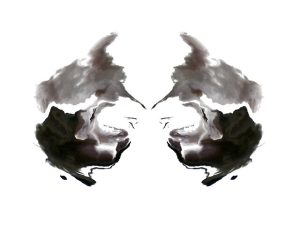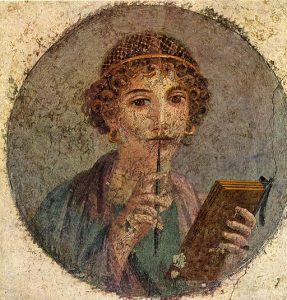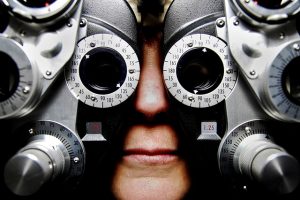Female Forces Behind the Mask: Rorschach’s Path to Violence and Heroism
There are few things that are black-and-white in Alan Moore and Dave Gibbons’ graphic novel Watchmen. Instead, heroes and villains and the justification of violence blur together into one disheveled and messy humanity.
Sebald’s Barbaric Poetry
“Nach Auschwitz ein Gedicht zu schreiben, ist barbarisch,” wrote Theodor Adorno. “To write poetry after Auschwitz is barbarism.” Since writing it in his 1949 essay, “Cultural Criticism and Society,” this sentence has been quoted and appropriated time and time again by writers, thinkers, and critics — some indignant, some philosophical, and some in agreement.
A Smidge too Manly, A Smidge too Motherly: An Analysis of Midge, the Friend-Zoned Female in Hitchcock’s Vertigo
“In a world ordered by sexual imbalance, pleasure in looking has been split between active/male and passive/female. The determining male gaze projects its phantasy on to the female figure which is styled accordingly” (Mulvey 11). This quote from Mulvey’s “Visual Pleasures and Narrative Cinema”, outlines her thoughts on classical Hollywood cinema, wherein woman is projected as image, and man is projected as the bearer of the look.
you burn me: Sappho In Conversation With Faulkner On Life After Death
The narrative of As I Lay Dying by William Faulkner could not exist without the character Addie Bundren – mother of five and wife to Anse. Throughout the chapters of the novel, the narrative’s perspective changes from character to character as they travel to Jefferson to bury Addie’s body. Addie herself has her own chapter – her voice resounding after death to speak her own monologue.
Convergence of Meaning: The Tripartite Nature of ‘I’ in Paul Auster’s City of Glass
Paul Auster’s City of Glass is a text that confronts a wide array of themes, two of the most prominent being language and identity. Language is presented as the conveyor of meaning, connected to the Biblical myth of Babel, whereas meaning is an evasive concept that is tied to the genesis of language, but ultimately distanced from it by the same connection.
Falling in Love with Siri: Undermining the Male Gaze through the Removal of the Female Body in Her
In her article “Visual Pleasure and Narrative Cinema”, Laura Mulvey aims to bring the oppressive male gaze into question, noting that, “in a world ordered by sexual imbalance, pleasure in looking has been split between active/male and passive/female” (11). Mulvey focuses on mainstream film, arguing that it is a coded language that fuels the active male gaze and passivity of the female.
Midge’s Point of View: Unacknowledged Subversion of the Symbolic in Hitchcock’s Vertigo
Laura Mulvey’s 1975 essay “Visual Pleasure and Narrative Cinema” includes a discussion of Alfred Hitchcock’s 1958 film Vertigo. While the discussion is relatively short, spanning less than a page, it makes important claims about the value of the film in psychoanalytic terms.
Sigmund Tzu and the Dream World
Delving deep into the psyche of Dora, Freud’s case history, Fragments of an Analysis of a Case of Hysteria (Dora), navigates the thoughts and dreams that course through her psyche to find, pick apart, and analyze the potential causes of grief and suffering that plague her daily life.
Eyes to Watch
Eyes are everywhere in the comic series Watchmen by Alan Moore and Dave Gibbons. From the eyes of every character to the pupil-like circles of clocks and “fallout shelter” signs, figures of vision can be found throughout.
The Souls of Black Folk and The Essentiality of Human Connection
Du Bois’ classic text The Souls of Black Folk does not at first read as a cohesive argument. Rather, each chapter offers a different style, a different purpose, and this makes for a complex and at times disjointed reading experience. The unifying factor in the text is the metaphor of the “Veil” – a metaphor which itself varies according to the scope of each chapter.









